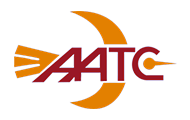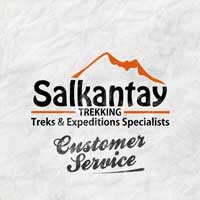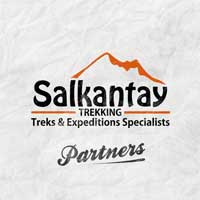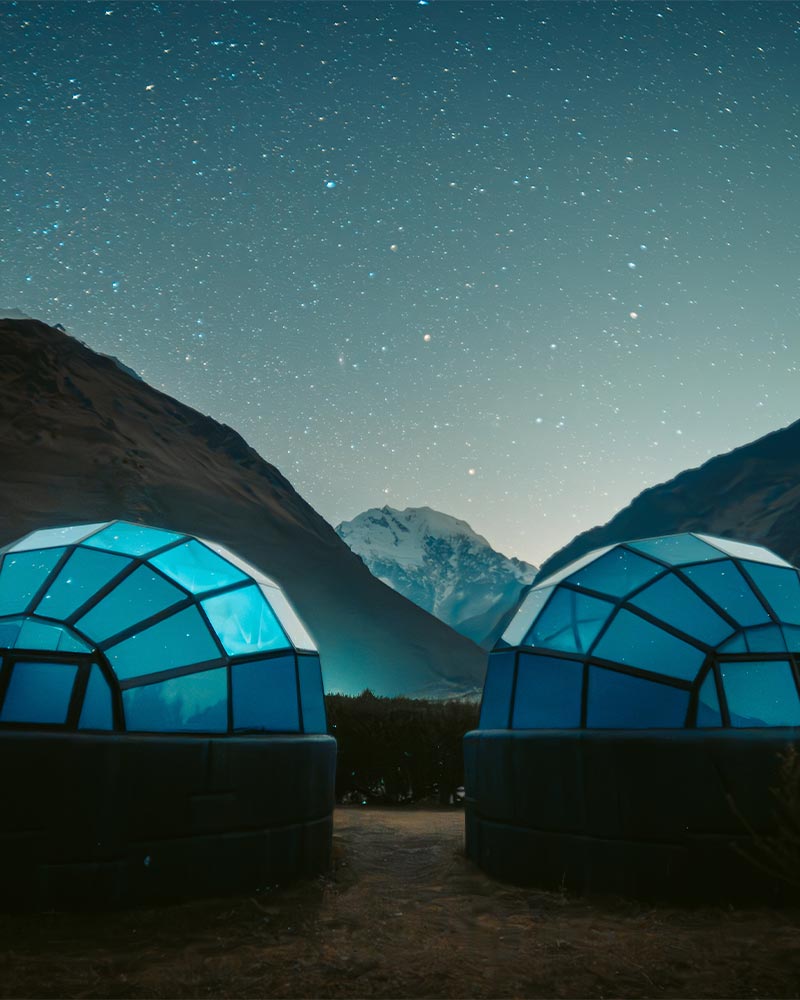Are you planning the exciting Salkantay trek to Machu Picchu? We understand that you may have many questions during the process. But don't worry; we're here to help! We have carefully compiled our travelers' most frequently asked questions for Salkantay Trek address all your concerns.
Before sending us a general inquiry, we recommend exploring this page. Here you will find all the information you need about the Salkantay trek and your visit to Peru. From practical tips to important details, we have all the answers you're looking for.
We are here to make your Salkantay trek unforgettable from the very first step.
Before sending us a general inquiry, we recommend exploring this page. Here you will find all the information you need about the Salkantay trek and your visit to Peru. From practical tips to important details, we have all the answers you're looking for.
We are here to make your Salkantay trek unforgettable from the very first step.
Frequent Questions
Here is a list of the frequently asked questions of our passengers
-
Is the Salkantay Trek worth it?
Without a doubt, the Salkantay Trek is known as the best alternative route to Machu Picchu, and many would even argue that it’s better than the world-famous Inca Trail. It’s an adventurous route and comes with some challenges, but you’ll also be rewarded with incredible views and fantastic, unique experiences.
-
Is the Salkantay trail Difficult?
The Salkantay Trek to Machu Picchu is a moderate to challenging trek. The most challenging part of the route is day 2, when you hike up to the Salkantay Pass—reaching an altitude of 4,600 masl. It’s a 3-hour stretch and is challenging due to the uphill climb and the high altitude.
Day 1 is relatively challenging in the afternoon during the hike up to Humantay Lake. Days 3 and 4 are much more manageable and are mainly downhill—you’ll cover more distance, though.
It’s important to remember that most people would class any trek in Cusco relatively challenging due to the high altitude.
-
Can I do the Salkantay Trek if I have no previous hiking experience?
Absolutely! The Salkantay Trek is well-suited for individuals without prior hiking experience. You can hike at your own pace and will receive support from local guides and muleteers.
Nevertheless, it's important to note that even though you'll have the guidance of an expert hiking team, some moderate preparation is advisable. Be sure to carefully review the information under the question "How can I prepare physically for the trek?" 😉
-
Is Salkantay Harder than the Inca Trail?
The Salkantay Trek and the Inca Trail have their challenges, but the difficulty level can vary based on personal preferences. The Salkantay Trek can be more challenging in terms of terrain and altitude, while the Inca Trail may present difficulties due to its length and steep steps.
The choice between the two will depend on your level of physical fitness and the amount of time you have available.
-
What are the main differences between the Salkantay trek and the Inca Trail?
- The Inca Trail is significantly more crowded than the Salkantay trek.
- The Salkantay trek offers greater comfort with more excellent bathrooms and accommodations than the Inca Trail.
- During the Salkantay trek, you will spend a night in a hotel before entering Machu Picchu, unlike the Inca Trail.
- The Inca Trail has a considerably higher cost than the Salkantay trek.
- The Inca Trail presents a slightly higher difficulty level than the Salkantay trek.
- We require a minimum of 2 people to form a group for the Inca Trail. In contrast, we offer departures almost daily for the Salkantay trek, allowing individual travelers to join existing groups.
-
How Far Do We Walk Each Day?
On average, you’ll walk around 7 hours daily, but day two will be longer and the most challenging. You can find the exact hiking times per day on our itineraries. Here’s a brief overview of how far you’ll walk each day on the Classic Salkantay 5 Days trek:
- DAY 1 — 10 km / 6.21 mi
- DAY 2 — 23.5 km / 14.6 mi
- DAY 3 — 17 km / 10.56 mi
- DAY 4 — 25 km / 15.53 mi
- DAY 5 — No exact distance as you’ll wander around Machu Picchu at your own pace.
-
How Much Does the Salkantay Trek Cost?
The price of the Salkantay trek varies according to the option you choose. Below is a summary of the costs for each option. Keep in mind that the value is per person for a group trek:
- SALKANTAY CHALLENGE 3 DAYS — US$ 550
- SALKANTAY SHORT 4 DAYS — US$ 595
- SALKANTAY CLASSIC 5 DAYS — US$ 650
- SALKANTAY PREMIUM PRIVATE 5 DAYS — US$ 995
- SALKANTAY & INCA TRAIL 6 DAYS — US$ 995
- SALKANTAY & INCA TRAIL 7 DAYS — US$ 1150
- SALKANTAY TREK & RAINBOW MOUNTAIN 7 DAYS — US$ 850
- SALKANTAY IMPERIAL 8 DAYS — US$ 1020
- ANDEAN EXPLORER 9 DAYS — 1100
-
Can I Rent Equipment for the Salkantay Trek?
For all of our treks, we provide you with accommodation. In addition, we have several camping items available if you wish to rent.
All our rentals are top-of-the-line equipment and can be booked in advance or at the briefing. Available rentals are:
- A sleeping bag for -15°C and a sleeping bag liner.
- Adjustable walking sticks.
Of course, if you already have these pieces of equipment, you’re more than welcome to bring them along with you. Remember to keep the weight restrictions in mind, of which you have 7 kg per person.
-
Is it necessary to use Trekking Poles during Salkantay Trek?
Trekking poles during the Salkantay Trek is optional and depends on your personal preferences. However, we recommend bringing a pair to provide additional stability and reduce the impact on your knees while ascending and descending on uneven terrain.
-
How Can I Prepare Physically for the Trek?
The Salkantay Trek to Machu Picchu is a relatively challenging trek, especially on the second day. The biggest challenge is the altitude, as you’ll be hiking up to 4,600 m. You can expect to hike up to 10 hours some days, which can be very difficult at this height.
To enjoy a more pleasant and hassle-free hike, it is recommended to have proper physical preparation. What can you do to be better prepared before the trek?
- Before departing, exercise cardiovascular exercises, such as walking regularly for several days.
- Maintain a healthy and balanced diet to keep your body in optimal condition. During the journey, we will provide you with highly nutritious and varied meals to give you the energy you need daily.
- Make sure to arrive in Cusco 2 or 3 days before starting the excursion to acclimatize properly. Please do so to avoid increasing the risk of experiencing altitude sickness during the route which may require you to return to Cusco.
- Use well-worn hiking boots. New footwear on the trail can cause unwanted pain.
-
Is Water Included on the Trip?
Yes. You’ll need to ensure you have enough water to last the first morning, but after this, we’ll provide boiled water at every breakfast, lunch, and dinner. The water is clean and safe to drink, so you don’t need to worry about that.
You will need to bring your own water bottle or Camelbak to refill. We don’t recommend plastic bottles, as we believe in sustainable tourism and take great care of the route.
If you need extra water at any stage or any other drink, you’ll find the occasional shop or kiosk along the way that sells them and snacks.
-
What Is the Food Like on the Trek?
Our professional chefs are experts in creating delicious dishes that make food one of the highlights of your Salkantay Trek journey. With careful nutritional planning, we have crafted an exceptional menu that will provide you with the necessary energy throughout the route.
Each meal offers various options with fresh, local ingredients, covering all food groups. If you have allergies or dietary preferences, don't worry. If you inform us in advance, we will ensure that you enjoy meals tailored to your needs.
Additionally, we will provide you with a cloth bag to fill with snacks each day. During the "tea time" around 5 pm, you can enjoy hot beverages and appetizers at all the campsites, keeping you active until dinner. You can rest assured that you won't go hungry and will have the opportunity to taste many typical Peruvian dishes during this unforgettable experience.
-
Do I Need to Bring Extra Money for the Trek?
Although everything is included and paid in advance, you must bring extra money. We suggest 300 or 400 Peruvian soles. This is because, in rural areas of the country, there will not be the option of paying in dollars.
You will likely not need this money, or not all of it. However, it is always better to carry cash in an emergency.
-
Do I Need a Permit for the Salkantay Route?
Except for the Salkantay routes that combine with the Inca Trail, the Salkantay treks do not require a permit. However, you will need to pay 20 soles upon entry, but this does not mean that you get a permit in advance.
-
Can I do the Salkantay Trek with young children?
It is possible to do the Salkantay Trek with young children. However, we recommend consulting with a doctor before embarking on the hike with children, especially if they have any pre-existing medical conditions.
It is also essential to consider the pace and needs of the children during the journey. They may require frequent breaks and proper hydration to maintain their energy levels. During the first two days of the route, you can find locals offering horseback services, which can greatly help the more challenging sections of the Salkantay Trek.
-
What is the Recommended Age for the Salkantay Trek?
The Salkantay Trek is relatively challenging. Therefore, we suggest a minimum age of 12 years, with good health, physical preparation, and at least three days of acclimatization to successfully complete the journey.
-
What type of Accommodation is Provided during the Salkantay Trek?
At Salkantay Trekking, we offer different campsites for each night during the Salkantay Trek. If you choose to do the classic trek, you will have the opportunity to spend the night at:
- Sky Camp in Soraypampa: The first night, you will sleep in glass domes located in front of the sacred mountains of Humantay and Salkantay.
- Mountain Sky View in Collpapampa: Here, you will enjoy the comfort of glamping.
- Super Jungle Domes in Lucmabamba: Designed to blend in with the surrounding nature.
Salkantay Trekking offers the most incredible and exclusive campsites to relax after a long day of hiking.
-
Can I request the accommodation service separately?
We regret to inform you that we do not offer accommodation services separately. Each of them is designed as part of complete itineraries that has a minimum duration of two days. If you would like more information about any of our itineraries, please contact us; we will be happy to provide you with additional details.
-
What is the Difference between the Classic Salkantay Trek and the Premium Salkantay Trek?
Feature Classic Trek (US$650) Premium Trek (US$995) Duration 5 Days 5 Days Duffle Bag 5 kg / 11 lb 10 kg / 22 lb Sleeping Bag ✘ Not included ✓ Included Trekking Poles ✘ Not included ✓ Included Emergency Horse ✘ Not included From Soraypampa to Salkantay Pass Meals Breakfast, lunch, and dinner (Days 1-4), Breakfast only on Day 5 (in Aguas Calientes) Breakfast, lunch, and dinner (Days 1-4), Breakfast and lunch on Day 5 (in Aguas Calientes) Day 1 Campsite Sky Camp Sky Camp Day 2 Campsite Mountain Sky View Mountain Sky View Day 3 Campsite Jungle Domes Super Jungle Domes Coffee Experience ✓ Included ✓ Included Cocalmayo Hot Springs ✘ Not included ✓ Transport & Entrance Included Train to Aguas Calientes PeruRail Expedition from Hidroelectrica (or IncaRail Voyager, subject to availability) Train ticket from Hidroelectrica to Aguas Calientes Hotel in Aguas Calientes Standard Hotel Upgraded Hotel Entrance to Machu Picchu Circuit 2 Circuit 2 Bus from Aguas Calientes to Machu Picchu One-way ✓ Round trip Train from Aguas Calientes to Ollantaytambo PeruRail Expedition (or IncaRail Voyager, subject to availability) Vistadome Observatory Train by PeruRail Transport to Starting Point ✓ Included ✓ Included Return to Cusco (Ollantaytambo to Cusco) ✓ Included ✓ Included -
What is the difference between the 4 and 5-day treks to Salkantay?
Salkantay Trek – 4 Days Classic Salkantay Trek – 5 Days Day 3 - Morning hike to La Playa Sahuayaco for a Coffee Experience with local farmers.
- After lunch, take a private vehicle to Hidroeléctrica, and follow the train tracks on foot to Aguas Calientes.
- Overnight in a standard hotel at the base of Machu Picchu.
- Continue on foot from La Playa to Lucmabamba, reaching our charming Jungle Domes.
- Optional visit to the Cocalmayo hot springs (additional cost).
Day 4 - Morning visit to Machu Picchu (Circuit 2) with a guided tour.
- Includes bus ticket to the site, train to Ollantaytambo, and return transport to Cusco.
- Begin an exciting hike to the archaeological site of Llactapata, offering a rare, distant view of Machu Picchu.
- After lunch in Aobamba, descend to Hidroeléctrica, and follow the railway trail to Aguas Calientes.
- Overnight in a standard hotel.
Day 5 x - Morning guided tour of Machu Picchu (Circuit 2).
- Includes bus ticket to the site, train to Ollantaytambo, and private transfer to Cusco.
-
Will I Have WiFi During the Trek?
If you’re hoping to contact friends and family back home, you’ll find we have WiFi available on the second and third nights of the Salkantay Trail. Please note that the service costs an additional cost of 10 soles.
The fourth night will be spent in a hotel in Aguas Calientes, where you’ll also have access to WiFi.
-
Will I Be Able to Charge My Devices During the Trek?
Yes. You’ll have the chance to charge your devices at each of our campsites. However, not all of them can leave your device charging overnight.
-
Will I Have Access to Bathrooms Along the Trek?
Yes. At each campsite, we have bathroom facilities. You’ll also find the occasional bathroom along the trek and at each lunch stop.
-
Will I Be Able to Have a Shower During the Trek?
Not in all campsites, you’ll find showers. However, please note the following:
- Soraypampa (1st camp): No showers.
- Collpapampa (2nd Campsite): Hot showers available at no extra cost.
- Lucmabamba (3rd Campsite): Hot showers available at extra cost.
- Hotel in Aguas Calientes (4th Night): Hot showers available at no extra cost.
The camps provide facilities from local families, so you have to pay 10 soles to use the showers. You'll be in a hotel on the last night in Aguas Calientes, so there’ll be no extra charge.
-
Should I Rent an Extra Horse on the Trek?
If you're concerned about the hike's difficulty or the impact of altitude, we offer you the option to rent a horse at an additional cost.
- If you wish to rent a horse on the first day of the hike (from Soraypampa Humantay Lake), the approximate cost is 80 soles.
- If you wish to rent a horse on the second day of the hike (from Soraypampa to Salkantay Pass), the approximate cost is 120 soles.
It's important to note that renting a horse will take you on a different route from the group on the first day. It's not necessary to pre-book the additional horse. If you take advantage of this option, you can do so immediately without any inconvenience.
-
What is the Best Season to hike the Salkantay to Machu Picchu?
The answer to this question varies according to your preferences. If you want to visit Cusco during the dry season, then it is best to arrive between May and October. The rest of the year it rains most days and we can never be sure of a rain-free trip. June and July are the busiest months, so you should book well in advance. Also, at this time of year it gets cold at night.
On the other hand, you might not be too worried about the weather and would prefer to enjoy the trek without many other visitors. In this case, traveling during the wet season means there aren’t many people on the trail. Do keep in mind, though, that it’s closed during February.
Overall, the best time of year to come is in May or October. The crowds aren’t too big, and the weather is generally lovely. This way, you enjoy the best of both worlds.
-
Can I Join as a Solo Traveler?
Yes, you can! Solo travelers join us almost daily for our treks. Just keep in mind that you’ll likely have to share the accommodation with another solo traveler of the same sex, of course. If you prefer to have a single hotel room, we can arrange it for you for an extra.
-
What is the Weather Like during the Salkantay Trek?
The weather in and around Cusco can be unpredictable, making it difficult to predict exactly what kind of weather you will encounter during the trek. However, we can assure you that the first night will be very cold, with temperatures that can drop as low as 0°C (32°F).
As you descend to lower altitudes and enter the Peruvian jungle, the nights will be warmer. The rainy season in Peru generally runs from late October to April, although there is always the possibility of rainfall. Therefore, we recommend that you bring a raincoat or poncho to protect you from the rain.
-
Can the Salkantay Trek be done in reverse, from Machu Picchu to Soraypampa?
Yes, it is possible to do the Salkantay Trek in reverse, from Machu Picchu to Soraypampa. However, it is important to note that this option is less common and less popular than the traditional route from Soraypampa to Machu Picchu. If you are interested in doing the Salkantay Trek in the reverse direction, we recommend consulting in advance to plan your trip and ensure you have an unforgettable experience.
Find the Perfect Destination in Peru
With astonishingly varied landscapes, stunning scenery, compelling history, and a legacy of fascinating cultures, there is truly something for everyone. Our expeditions in Peru are designed to showcase all that this country has to offer.
Our expeditions in Peru are designed to showcase all that this country has to offer.











